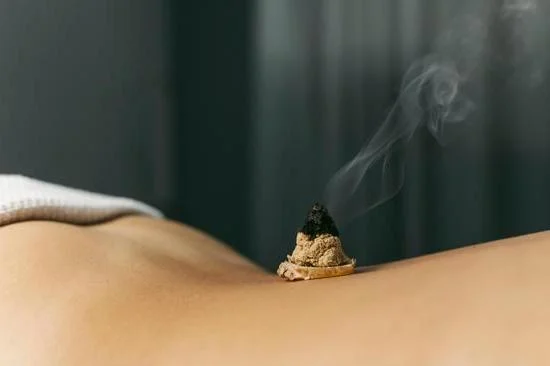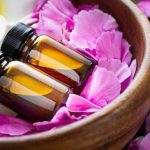
Safe essential oil usage is essential when embarking on your journey into the world of aromatherapy. This introductory section will provide you with the basics of essential oils, giving you a solid foundation to start your aromatic adventure. Understanding how to use these potent plant extracts safely is crucial for protecting your health and well-being.
Essential oils are highly concentrated substances extracted from various parts of plants using methods such as steam distillation or cold pressing. These natural compounds contain the distinct fragrances and therapeutic properties of the plants they are derived from. While essential oils offer a wide range of benefits, it is important to remember that improper usage can lead to adverse effects.
To ensure safe essential oil usage, it is crucial to follow precautions and guidelines recommended by experts in the field. This involves understanding dilution ratios, proper storage techniques, and identifying potential allergies or sensitivities. By arming yourself with this knowledge, you can confidently incorporate essential oils into your daily routine while minimizing the risk of irritation or other negative reactions.
In the following sections, we will delve deeper into specific aspects of safe essential oil usage, including different application methods, dealing with allergies, dilution guidelines, storage tips, choosing reliable brands, creating blends, adapting practices for children and pets, consulting with professionals, and addressing common concerns through a Q&A session. With this comprehensive guide at hand, you will be equipped to navigate the world of essential oils safely and enjoy their many benefits.
Understanding the Importance of Safe Essential Oil Usage
When it comes to using essential oils, understanding the importance of safe usage is crucial for protecting your health and well-being. While these natural plant extracts can offer a range of benefits, it’s important to approach their use with caution and respect for their potency. This section will explore why safe essential oil usage is paramount and how it can safeguard your overall wellness.
The Potential Risks of Unsafe Usage
While essential oils are generally considered safe when used properly, there are potential risks associated with their misuse or overuse. Some essential oils can cause skin irritation, allergic reactions, or even chemical burns if applied in concentrated form directly onto the skin or used improperly. Ingesting certain oils can also be harmful, as some oils are toxic when ingested or can interact negatively with medications.
Additionally, there is a risk of sensitization when using essential oils repeatedly over time, which may result in developing an allergic reaction to that specific oil. It is vital to remember that every individual’s sensitivity and reaction to essential oils can differ, so being cautious and observant of any adverse effects is critical.
Promoting Safe Usage for Optimal Benefits
To ensure the safety of essential oil usage, it is essential to follow certain guidelines and precautions. First and foremost, always conduct thorough research on each essential oil you plan to use before incorporating it into your routine. Familiarize yourself with its potential side effects, contraindications, and recommended dilution ratios.
Furthermore, proper dilution is key in safely using essential oils topically. Diluting the oil in a carrier substance such as a carrier oil or unscented lotion helps protect against skin irritation and allows for more controlled application. Each individual should find their appropriate dilution ratio based on factors such as age, skin sensitivity, and the purpose of use.
Lastly, be cautious about where you purchase your essential oils from. Choose reliable and reputable brands that prioritize quality and purity. Look for oils that have been tested by third-party laboratories and are labeled with important information such as the botanical name, country of origin, and dilution recommendations.
By understanding the potential risks and taking appropriate safety measures, you can enjoy the many benefits of essential oil usage while ensuring your health and well-being remain protected. In the next sections, we will dive deeper into specific safety measures, methods of application, allergies, dilution guidelines, storage tips, choosing reliable brands, safe blending techniques, usage for children and pets, consulting experts for advice, and addressing common concerns through a Q&A session.
Essential Oil Safety Measures
Essential oils have gained popularity in recent years for their various health and wellness benefits. However, it is important to understand that improper usage of these potent oils can pose risks to your health and well-being. In this section, we will discuss essential oil safety measures that every user should follow to ensure a safe and enjoyable experience.
- Research before use: Before using any essential oil, it is crucial to conduct thorough research on its properties, potential side effects, contraindications, and proper usage guidelines. Each essential oil has its own unique characteristics and may interact differently with individuals based on their health conditions or medications they are taking. Therefore, arming yourself with knowledge about the specific oil you plan to use is imperative.
- Patch test: A patch test is a simple yet effective way to check for any potential allergic reactions or skin sensitivities to an essential oil. To perform a patch test, dilute the essential oil in a carrier oil and apply a small amount on the inside of your forearm. Wait for 24 hours and observe any signs of redness, itching, or irritation. If there are no adverse reactions, it is likely safe for you to use.
- Dilution ratio: Essential oils are extremely concentrated substances and should never be applied directly onto the skin without proper dilution. The most common dilution ratio for adults is 2-3 drops of essential oil per teaspoon (5 mL) of carrier oil. For children or those with sensitive skin, further dilution may be necessary.
When handling essential oils, it is crucial to prioritize safety at all times. By following these safety measures and guidelines, you can ensure a positive experience with essential oils while protecting your health and well-being.
Exploring Different Methods of Essential Oil Application
Topical Application: Direct Contact with the Skin
One of the most common methods of using essential oils is through topical application, or direct contact with the skin. When applied topically, essential oils can be absorbed into the bloodstream and provide localized benefits. However, it’s important to note that some essential oils are highly potent and may cause irritation or adverse reactions if not properly diluted.
To use essential oils topically, start by diluting them with a carrier oil such as coconut oil, jojoba oil, or almond oil. The general rule of thumb is to use a 2% dilution for adults – this means adding around 12 drops of essential oil per ounce of carrier oil. However, certain oils like tea tree or lavender can be used undiluted in small areas for short periods of time.
When applying essential oils topically, it’s crucial to perform a patch test first to ensure you don’t have any sensitivities or allergies. Apply a small amount of diluted oil to a small area of your skin and wait for 24 hours to observe any adverse reactions. If redness, itching, or inflammation occurs, avoid using that particular oil.
Inhalation: Breathing in the Aroma
Inhalation is another popular method of using essential oils. When you inhale the aroma of an essential oil, it can have a direct influence on your emotional and physical well-being. Inhalation can be done through various techniques such as using a diffuser, steam inhalation, or simply taking deep breaths from an open bottle.
Using a diffuser is one of the easiest ways to enjoy the benefits of inhalation. There are different types of diffusers available including ultrasonic diffusers that disperse tiny water droplets infused with essential oils into the air and nebulizing diffusers that use pressurized air to atomize pure essential oils.
Steam inhalation can be beneficial for respiratory issues or congestion. Add a few drops of essential oil to a bowl of hot water and place a towel over your head, leaning over the bowl to inhale the steam for about 5-10 minutes. Ensure that you close your eyes during this process to avoid any discomfort.
Ingestion: Using Essential Oils Internally
Ingesting essential oils is another method of application, but it is important to exercise caution when using this technique. Not all essential oils are safe for ingestion, and some can be toxic if consumed in large quantities. It is always recommended to consult with a qualified aromatherapist or medical professional before ingesting essential oils.
If you decide to ingest essential oils, ensure that you choose high-quality, food-grade oils specifically labeled for internal use. Start with very small amounts and dilute them in a carrier oil or mix them with honey, yogurt, or warm tea. It’s important to note that not all essential oils are suitable for ingestion, so research thoroughly and seek guidance from experts before proceeding with this method of application.
Remember, everyone responds differently to essential oils based on their individual body chemistry and sensitivities. It’s vital to listen to your body and discontinue use if you experience any adverse reactions. By exploring different methods of application, you can find the technique that works best for you and safely enjoy the benefits of essential oils.
Essential Oils and Allergies
Understanding Allergies
Allergies are a common concern when it comes to essential oil usage. It’s important to understand that allergies to essential oils can develop at any time, even if you have used an oil before without any issues.
Allergic reactions occur when the immune system mistakenly identifies an essential oil as a threat, triggering an immune response. These reactions can range from mild symptoms like skin irritation or nasal congestion to more severe symptoms such as swelling, difficulty breathing, or even anaphylaxis.
Identifying Potential Allergens
To prevent allergic reactions, it is crucial to identify potential allergens in essential oils and avoid them if necessary. Some of the most common allergens found in essential oils include citrus oils (such as lemon, lime, and grapefruit), tree oils (such as pine and eucalyptus), and floral oils (such as lavender and chamomile). However, it’s important to note that individual sensitivities vary greatly, and what may cause an allergic reaction for one person may not affect another.
Therefore, it’s important to always perform a patch test before using a new essential oil or blend. Apply a small amount of diluted oil on your inner forearm and wait 24 hours to check for any adverse reactions. If no reaction occurs, it is generally safe to use the oil.
Avoiding Potential Sensitivities
If you have confirmed sensitivities or allergies to certain essential oils through patch testing or previous experiences, take precautions to avoid exposure. You can easily substitute problematic oils with ones that are less likely to cause allergic reactions. For example, if you’re allergic to citrus oils but still want a refreshing aroma in your diffuser blend, consider using peppermint or spearmint instead.
Furthermore, using essential oils in a diluted form can also help reduce the risk of allergies. When diluted with a carrier oil, such as jojoba or coconut oil, the concentration of the essential oil is reduced, making it less likely to cause irritation or sensitization. Start with a low dilution ratio (around 1-2%) and gradually increase if you have no adverse reactions.
By being aware of your sensitivities and taking necessary precautions, you can continue to enjoy the benefits of essential oils without risking allergic reactions.
In the next section, we will discuss dilution guidelines for safely using essential oils without irritation or adverse reactions.
Dilution Guidelines
When using essential oils, it is crucial to understand the proper dilution guidelines to ensure safe and effective usage. Essential oils are highly concentrated substances that need to be diluted before application to avoid potential irritation or adverse reactions on the skin. Diluting essential oils also helps improve absorption and reduces the risk of sensitivities, especially for those with more sensitive skin types.
To safely dilute essential oils, there are a few guidelines that every user should follow:
- Carrier Oils: Carrier oils are used to dilute essential oils and help spread them across the skin. Some commonly used carrier oils include jojoba oil, almond oil, coconut oil, and olive oil. It is important to choose a carrier oil that is pure, natural, and suitable for your specific needs.
- Dilution Ratios: The appropriate dilution ratio depends on various factors such as the strength of the essential oil being used and the intended use. As a general guideline, a 2% dilution is often recommended for most adults. This means adding around 12 drops of essential oil per ounce (30 mL) of carrier oil. However, some essential oils may require a lower dilution ratio due to their potency or potential skin sensitivity.
- Sensitivity Testing: Before applying any diluted essential oil to your skin, perform a patch test on a small area first. Apply a small amount of the diluted mixture and wait for at least 24 hours to check for any adverse reactions or sensitivities.
It is also important to note that certain individuals may be more sensitive than others even at recommended dilutions. If you experience any discomfort or irritation during use, discontinue immediately and consult a healthcare professional.
Properly diluting essential oils ensures their safety and provides an enjoyable aromatherapy experience without any unwanted side effects. By following these basic dilution guidelines, users can protect their well-being while maximizing the benefits of essential oils in their daily routine.
Safe Essential Oil Storage
Proper storage of essential oils is crucial to maintaining their potency and ensuring their effectiveness. Exposure to light, heat, oxygen, and moisture can cause essential oils to deteriorate, lose their therapeutic properties, and even become potentially harmful. To preserve the quality of your essential oils and extend their shelf life, consider these important tips for safe storage:
- Keep essential oils in dark-colored glass bottles: Essential oils should always be stored in amber or cobalt blue glass bottles. These dark colors help block out light that can degrade the oil over time.
- Store in a cool, dry place: Essential oils should be kept away from direct sunlight and stored in a cool area with a stable temperature. Heat can cause the oil to oxidize and reduce its therapeutic benefits.
- Seal the bottles tightly: Ensure that the caps of the bottles are properly sealed after each use. This prevents oxygen from entering the bottle and affecting the quality of the oil.
- Avoid storing near heat sources: Keep essential oils away from heat sources such as stoves, radiators, or direct sunlight. High temperatures can cause the oil to evaporate quickly or even change its chemical composition.
- Consider using a refrigerator or freezer: Storing certain delicate oils, like citrus or floral oils, in a refrigerator or freezer can help prolong their shelf life. However, it’s important to note that some thicker oils might solidify when exposed to low temperatures – if this happens, simply let them return to room temperature before use.
- Keep essential oils out of reach of children and pets: Like any other household product, essential oils should be stored in a safe place where children or pets cannot access them accidentally.
By following these storage guidelines, you’ll ensure that your essential oils remain potent and untainted by contaminants. Proper storage practices not only maintain their effectiveness but also ensure they are safe to use for your aromatherapy needs. Taking these precautions will help you get the most out of your essential oils and enhance your overall experience with them.
Essential Oil Brands and Quality
As essential oils continue to gain popularity, it is crucial to prioritize safety and choose reliable brands and high-quality products for your aromatherapy needs. With the increasing demand for essential oils, there has been a surge in the market, making it challenging to distinguish reputable brands from those that may compromise safety or quality. Understanding how to select reliable products ensures that you are using essential oils that are safe, effective, and have undergone proper testing.
When choosing essential oil brands, it is important to research their reputation and history. Look for companies with a transparent approach that provide clear information about their sourcing, extraction methods, and testing processes. Reputable brands are committed to working directly with farmers or distillers who use sustainable practices. They should also conduct rigorous testing of their products to ensure purity and quality.
Another key consideration when selecting essential oil brands is their commitment to education and customer support. Trustworthy companies will provide extensive information on safe usage guidelines and offer resources such as blogs, articles, or customer service representatives who can answer any questions you may have. This shows their dedication to customer safety and ensures that you can make informed decisions about using their products.
Finally, look for certifications or affiliations with recognized organizations in the industry. Third-party certifications such as USDA Organic or ISO 9001 indicate that the brand meets specific standards for organic production or quality management systems. Additionally, affiliations with professional aromatherapy associations like the National Association for Holistic Aromatherapy (NAHA) further demonstrate a commitment to following best practices in the industry.
By considering these factors when choosing an essential oil brand, you can feel confident in the safety and quality of your aromatherapy products. Remember that investing in reliable brands not only protects your health but also helps create a more sustainable industry by supporting ethical practices and responsible sourcing.
Mixing Essential Oils
When it comes to using essential oils, one of the most important aspects to consider is their compatibility. Not all essential oils can be safely mixed together, as some combinations may result in adverse reactions or diminish the therapeutic properties of each oil. This section will provide a comprehensive guide to understanding the compatibility of essential oils and how to create safe blends.
Each essential oil has its own unique chemical composition, which can interact with other oils in different ways. Some oils may enhance each other’s properties when combined, creating a more potent blend, while others may have conflicting characteristics that could potentially cause harm. It is crucial to research and understand the chemical profiles of different essential oils before attempting to mix them.
One useful tool for understanding compatibility is the concept of essential oil classification. Essential oils can generally be classified into different categories based on their chemical constituents, such as floral, citrus, herbal, or woodsy. Oils from the same category often blend well together because they share similar chemical components. For example, floral oils like lavender and rose tend to harmonize well with each other.
To help you navigate the world of mixing essential oils safely, here are some general guidelines:
- Start with small quantities: When experimenting with new blends, it’s best to start with smaller amounts of each oil until you are familiar with how they interact.
- Test for sensitivity: Before applying a blend topically or using it in any other way, perform a patch test on a small area of skin to check for any adverse reactions or sensitivities.
- Consider aroma profiles: As you mix essential oils, pay attention to how their scents complement each other. Remember that creating a balanced aroma is just as important as ensuring safety.
- Research safety precautions: While many combinations are generally safe when used appropriately and in controlled quantities, it’s crucial to research any potential contraindications or safety precautions for specific essential oils.
| Essential Oil | Compatible Oils | Incompatible Oils |
|---|---|---|
| Lavender | Bergamot, Clary Sage, Geranium | Peppermint, Eucalyptus, Rosemary |
| Lemon | Lavender, Orange, Grapefruit | Cinnamon, Clove, Patchouli |
| Peppermint | Eucalyptus, Lemon, Tea Tree | Cinnamon, Rosemary, Thyme |
Remember that this table provides only general guidance and that each individual may have different sensitivities or reactions to specific oils. It is always recommended to consult with a qualified aromatherapist or essential oil expert for personalized advice when creating blends. By understanding the compatibility of essential oils and following proper guidelines, you can safely create blends that enhance your well-being and provide effective aromatherapy benefits.
Safe Usage for Children and Pets
When using essential oils, it is important to take extra precautions when it comes to children and pets. Both children and animals have specific sensitivities and vulnerabilities that need to be considered in order to ensure their well-being.
First and foremost, it is crucial to always keep essential oils out of reach of children and pets. Essential oils are highly concentrated substances that can be harmful if ingested or applied directly without proper dilution. Ingesting certain essential oils can lead to toxicity, while direct application on the skin can result in irritation or even burns. Therefore, make sure to store your essential oils in a safe place that is inaccessible to children and pets.
When using essential oils around children and pets, it is best to stick with gentle, kid-friendly oils that are known to be safe. Some examples include lavender oil, chamomile oil, and cedarwood oil. Be cautious when using more potent oils such as peppermint or eucalyptus as they may be too strong for young ones or animals with respiratory issues.
| Essential Oils Safe for Children | Essential Oils Safe for Pets |
|---|---|
| Lavender | Lavender |
| Chamomile | Cedarwood |
| Cedarwood | Frankincense |
It is also important to note that the size and weight of children and pets play a role in determining the appropriate dilution ratios. Children have thinner skin than adults, so it is recommended to use a lower dilution rate when applying essential oils topically. Likewise, smaller animals should receive less concentrated blends compared to larger ones. Always consult with a trusted aromatherapist or veterinarian for specific guidelines and recommendations.
By adapting safe practices and using kid-friendly and pet-friendly essential oils, you can incorporate aromatherapy into your home while ensuring the well-being of your little ones and furry friends. Remember, it is always better to err on the side of caution when it comes to their health and safety.
Consulting with Experts
Seeking professional advice when it comes to using essential oils is essential for ensuring safe usage and preventing any potential risks or adverse reactions. While essential oils can offer numerous benefits for your health and well-being, it’s crucial to consult with experts who have in-depth knowledge and experience in aromatherapy.
One of the primary reasons why consulting with experts is important is because they can provide personalized guidance based on your specific needs and circumstances. A trained aromatherapist or healthcare professional can assess your individual health conditions, medications you may be taking, and other factors that could affect how you should use essential oils safely. They can also help you determine which oils are best suited for your desired effects and advise on proper dilution ratios for different applications.
Furthermore, professionals can help navigate the vast amount of information available about essential oils online. With so many sources of information, it’s easy to become overwhelmed or confused about what is accurate and reliable. An expert can steer you towards reputable resources, scientific studies, and evidence-based information regarding essential oil safety.
Another benefit of consulting with experts is that they can educate you on potential contraindications and interactions between essential oils and medications or medical conditions. Some essential oils may have adverse effects if used by individuals with certain health conditions, such as pregnancy, high blood pressure, or epilepsy. Professionals can help determine which oils are safe for you based on your specific circumstances.
Q&A Session
In conclusion, the Q&A session is a valuable resource for addressing common concerns and answering readers’ questions about safe essential oil usage. It provides an opportunity to delve deeper into specific issues that may not have been covered in the previous sections. By addressing these concerns and providing answers, readers can gain a better understanding of how to safely incorporate essential oils into their lives.
One of the main benefits of the Q&A session is that it allows readers to get personalized advice and clarification on any doubts they may have. Essential oil usage can vary from person to person, and it’s important for individuals to feel confident in their choices. Through this interactive format, readers can feel supported in exploring safe essential oil practices that work best for them.
Additionally, the Q&A session serves as a platform for building a community of like-minded individuals interested in safe essential oil usage. Readers can learn from one another’s experiences, share tips and tricks, and even offer advice based on their own knowledge and expertise. This collective wisdom contributes to a more well-rounded understanding of essential oil safety.
Overall, the Q&A session is an integral part of the article “Safe Essential Oil Usage” as it ensures that readers have access to accurate information and guidance when it comes to incorporating essential oils into their daily routines. By addressing common concerns and answering readers’ questions, this section provides a comprehensive resource for those looking to cultivate a safe and effective relationship with essential oils.
Frequently Asked Questions
How do you safely use essential oils?
Safely using essential oils involves several key practices. First, it is important to dilute the essential oil with a carrier oil before applying it to the skin. This helps prevent potential irritation or sensitivity reactions.
Additionally, it is crucial to perform a patch test by applying a small amount of diluted oil to a small area of skin and observing for any adverse reactions before using it more widely. When diffusing essential oils, ensure proper ventilation in the room to avoid inhaling excessive amounts of the oil. Furthermore, always follow the recommended dosage guidelines provided by reputable sources and avoid ingesting essential oils without proper guidance from a certified aromatherapist or healthcare professional.
How often is safe to use essential oils?
The frequency of use for essential oils depends on various factors such as the specific oil being used, individual sensitivities, and the purpose behind its use. Generally, it is recommended to use essential oils intermittently rather than continuously. For example, some individuals may benefit from using an essential oil for a few weeks before taking a break for a similar duration.
This approach helps prevent potential sensitization or diminishing effects over time. It is advisable to carefully read the instructions and recommendations provided by trusted sources or consult with an aromatherapist or healthcare practitioner for personalized guidance on how often to use specific essential oils.
Are essential oils safe for daily use?
Whether essential oils are safe for daily use largely depends on the type of oil and each individual’s unique circumstances. Many individuals do incorporate certain essential oils into their daily routines safely and enjoy their potential benefits. However, caution should be exercised when using highly concentrated or potentially irritant oils on a daily basis as they may lead to sensitization or skin reactions over time.
Examples of these powerful oils include cinnamon bark oil, clove bud oil, and oregano oil among others. For daily use, consider milder oils such as lavender, tea tree, or peppermint diluted appropriately in carrier oils like coconut or jojoba oil that are generally considered safe for regular use. It is always recommended to consult with a qualified aromatherapist or healthcare professional to ensure the safe daily use of essential oils.




